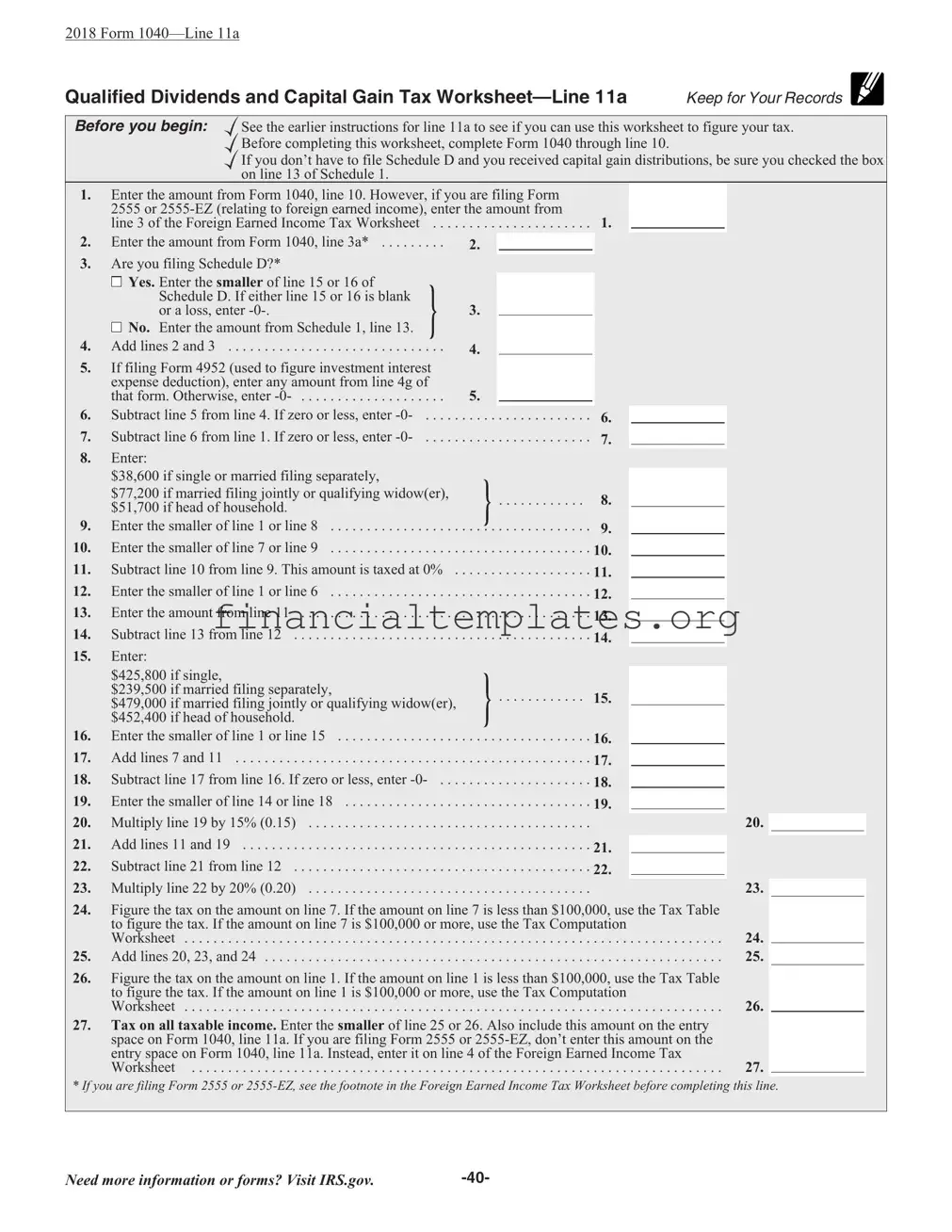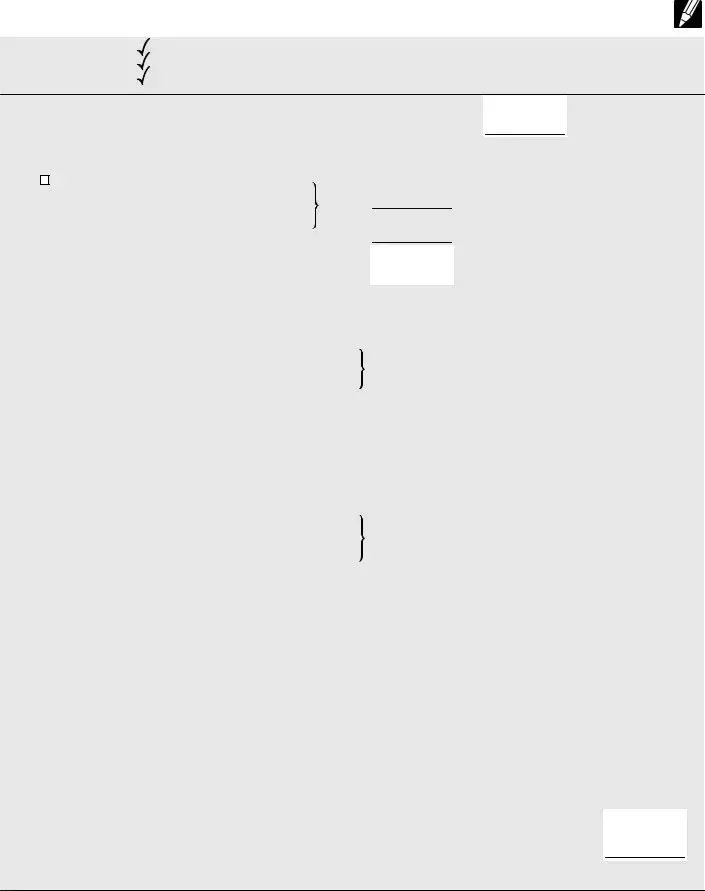The Form 1040—Line 11a is closely related to the Schedule D (Form 1040), Capital Gains and Losses document. Both are integral for taxpayers who need to report capital gains or losses from investments or the sale of property. While the Qualified Dividends and Capital Gain Tax Worksheet directly calculates the tax on qualified dividends and capital gains at preferential rates, Schedule D categorizes these transactions and determines the overall gain or loss to be reported on Form 1040. The interaction between these forms ensures accurate tax calculation on investment income.
Similarly, the Schedule 1 (Form 1040), Additional Income and Adjustments to Income, shares a connection with the Qualified Dividends and Capital Gain Tax Worksheet. Schedule 1 is used to report income or adjustments not listed on the main Form 1040, such as capital gain distributions that don't require filing Schedule D. It provides a summary of additional income streams that directly affect the computation on the Qualified Dividends and Capital Gain Tax Worksheet, specifically in determining the correct taxable income amount.
The Foreign Earned Income Tax Worksheet is designed for taxpayers who claim the foreign earned income exclusion or the foreign housing deduction (Form 2555 or 2555-EZ). This worksheet adjusts the taxpayer's income to account for these exclusions before calculating tax using the Qualified Dividends and Capital Gain Tax Worksheet. It highlights the necessity of adjusting gross income to accurately reflect taxable income from domestic sources, ensuring that the preferential tax rates are applied correctly.
Form 4952, Investment Interest Expense Deduction, also interacts with the Qualified Dividends and Capital Gain Tax Worksheet. If taxpayers have investment interest expenses, Form 4952 is used to calculate the deductible amount. This deductible amount can adjust the income on the Qualified Dividends and Capital Gain Tax Worksheet, directly affecting the tax calculations related to investment income, and ensuring that taxpayers benefit from all applicable deductions.
The Tax Table and the Tax Computation Worksheet provide the mechanisms for calculating the tax due on taxable income. Depending on the taxpayer's taxable income level, either the Tax Table or the Tax Computation Worksheet is used to determine the final tax liability on ordinary income. In contrast, the Qualified Dividends and Capital Gain Tax Worksheet specifically deals with calculating tax on qualified dividends and capital gains at the lower tax rates, integrating the outcomes from the Tax Table or Tax Computation Worksheet for comprehensive tax computation.
Form 2555 or 2555-EZ, Foreign Earned Income, directly impacts the figures used in the Qualified Dividends and Capital Gain Tax Worksheet. These forms allow for the exclusion of foreign earned income from taxable income, necessitating adjustments to the income figures used in the Qualified Dividends and Capital Gain Tax Worksheet. This ensures that only appropriately taxed income is considered, highlighting the interplay between foreign income treatment and domestic tax calculations.
The Alternative Minimum Tax (AMT) Worksheet is another document that shares objectives with the Qualified Dividends and Capital Gain Tax Worksheet. While the AMT Worksheet is used to ensure that taxpayers pay at least a minimum amount of tax, it requires input from capital gains and dividends as well. This connection underscores the comprehensive approach to tax calculation, ensuring that preferential tax treatments do not overly reduce tax liabilities under the AMT rules.
The Child Tax Credit Worksheet is important for taxpayers claiming the child tax credit. Though primarily focused on determining the allowable credit based on dependents, this worksheet indirectly relates to the Qualified Dividends and Capital Gain Tax Worksheet through its influence on the overall tax liability. It exemplifies how various credits and deductions work together with income calculations to determine the final tax due.
Lastly, the Earned Income Credit (EIC) Worksheet is utilized to calculate the earned income tax credit, which is designed for low- to moderate-income working individuals and families. While focusing on earned income, the calculation of adjusted gross income in this worksheet considers the tax implications of capital gains and dividends reported through the Qualified Dividends and Capital Gain Tax Worksheet. This interconnection ensures that tax benefits are accurately applied across different income sources, reflecting the holistic approach to individual tax assessment.



